Top News
April 6, 2017 Ryukyu Shimpo
Recently the Okinawa Institute of Science and Technology (OIST) Graduate University and an Australian research team sequenced the genomes of crown-of-thorns starfish (COTS) that live in Okinawa and the Great Barrier Reef, Australia. The researchers also found that COTS release a water-borne chemical substance into the ocean that attracts more COTS to aggregate. Since COTS feed on coral, a large population outbreak in Okinawa has caused a rise in the severity of coral damage. Although the COTS population is not currently being checked, using their chemical attractant could lead to development of an effective biocontrol measure.
This is the first time that COTS genomes have been sequenced, and the results were published on April 5 in the English-language scientific journal Nature.
COTS aggregate in one location during spawning season. By sequencing COTS genomes, these researchers identified specific proteins in the chemical attractant. In an experiment using water tanks, ocean water in which COTS were bred was taken and inserted into a tank of other COTS. The receiving COTS displayed the reaction of moving toward the inserted ocean water. This reaction indicates a possibility that COTS may release and receive starfish-specific proteins as a means of communication.
This research on the genomes of COTS from Okinawa and the Great Barrier Reef found that these two groups of COTS share 98.8 percent nucleotide identity. OIST Professor Noriyuki Sato, who was involved in the research, called these results “astonishing.” Professor Sato seemed to think it is quite unlikely that the COTS in Okinawa and the Great Barrier Reef, which are separated by about 5,000 kilometers but closely resemble each other, just gradually shifted their habitats apart over time. As COTS in both areas are of the same species, Sato suggested that it could be due to COTS of one origin in the past that experienced a rapid and extensive mass outbreak.
Currently, biocontrol efforts involve capturing COTS one starfish at a time. Professor Sato says that making COTS amass using their chemical attractant could make it possible to remove many COTS simultaneously in the future.
(English translation by T&CT and Erin Jones)
Go to Japanese
March 23, 2017 Ryukyu Shimpo
At the Higashi village representative council’s regular meeting, it was announced that noise complaints filed against US military aircrafts went up to 114 cases between April 1, 2016 to March 14, 2017. This is twice the number of complaints in the previous year. Higashi village mayor, Morihisa Iju, revealed the figures in response to an inquiry from Shinji Isa during the meeting.
According to the village, there were 68 noise complaints filed regarding the MV-22 Osprey, and 46 complaints were raised for other types of US military aircrafts. That is double the number of complaints made in each category in 2015. The complaints were mainly made in the Takae district where a helicopter landing area is located. Mayor Iju said, “the helipad is relatively close to residential areas. I will demand the key parties ensure the living environment for villagers is not changed drastically.”
(English translation by T&CT and Sayaka Sakuma)
Go to Japanese
April 1, 2017 Ryukyu Shimpo
One cannot infer if Kawada is aware of his own duties. It is incomprehensible that he would act and speak toward an Okinawa Prefectural Assembly representative in a narrow-minded and self-righteous manner.
In response to an Okinawa Prefectural Assembly representative’s request for the five-year-period closure of Futenma Air Station operations, the Ministry of Foreign Affairs Okinawa Liaison Office’s Ambassador in charge of Okinawan Affairs Tsukasa Kawada made a statement on government subsidies to Okinawa, speaking as though the subsidies are compensation for the base burden. This statement makes one question if Kawada adequately considers Okinawans.
On top of this, despite the Abe administration continually breaking the promise for five-year-period closure of Futenma Air Station operations, Kawada showed his perception justifying that relocation to Henoko is “for the sake of Okinawans.”
In regards to Okinawa’s base burden, Ambassador Kawada dared to say that out of Okinawa’s 4-trillion-yen economy, 2 trillion yen are subsidies from the mainland.
A written opinion unanimously approved in the Okinawa Prefectural Assembly in hand, the assembly representative pressed for the Futenma closure promise to be fulfilled, and showed astonishment at Kawada’s audacity for not hesitating to draw a link between the base burden and the budget. Kawada’s cunning attempt to propagate the impression that Okinawa is receiving favorable economic treatment is conspicuous.
As for the 2-trillion-yen sum, Okinawa development and finance experts indicate that the sum is erroneous by more than 5 hundred billion yen. In terms of the nationwide average, Okinawa’s dependence on the national treasury is not high. Japan provides a meager sum and insists on Okinawans’ gratitude. Since this ambassador has newly taken his post on an island with military bases, it is curious what he may be observing, and to whom he may be listening.
When asked his point of view on Futenma closure of base operations, Kawada said, “That is not my business; my duty is to convey everyone’s requests to the Minister for Foreign Affairs.” Facing criticism for this remark, he became defiant and asked, “Why is [my duty] for you to decide?” He also said, “There is no use in having that discussion.”
Kawada has essentially taken on the pessimistic public opinion of an Okinawa that suffers under an utterly unimproved base burden at face value, and has abdicated even the minimum role of expressing an opinion in his own words. Is the Ambassador for Okinawa the same as a fax machine that just transmits requests to Kasumigaseki? (Translator’s note: Kasumigaseki is an area of Chiyoda, Tokyo where many ministry offices are located.)
Okinawans can no longer see the significance of having an extraordinary and plenipotentiary ambassador to Okinawa. It is time to request cancellation of his post. The problem is not limited to Kawada, because his statements reflect the Abe administration’s attitude of making light of Okinawan popular will.
U.S. military incidents, accidents, aircraft noise and such base-related suffering that threatens human rights will definitely not abate. Since 2009 the ambassador for Okinawa has stopped periodic interviews. The ambassador for Okinawa secludes himself in his parlor, and we cannot recall any achievements that he has made. Is it not a waste of our tax money to maintain this office?
(English translation by T&CT and Erin Jones)
Go to Japanese
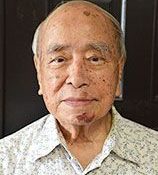
April 4, 2017 Ryukyu Shimpo
Masahide Ota, ex-governor of Okinawa, has been nominated as a candidate for the 2017 Nobel Peace Prize. The, “Continuing the spirit of ‘life itself is treasure,’ bringing the Nobel Peace Prize to the Okinawan people who lay the foundation for peace,” executive committee held a press conference on March 3 at the Okinawan Prefectural Press Club, and announced that they had received word of the nomination from the Norwegian Nobel Committee.
The executive committee has been working for some time to help award a Nobel Peace Prize to the Okinawans who lived through the Battle of Okinawa and continue a movement for peace. As the governor of Okinawa, Ota laid the foundation for peace, and as someone who lived through the Battle of Okinawa and continues to do research about it, efforts began to make him the candidate for the prize as the representative of Okinawans.
Professor Tetsumi Takara of the Okinawa University Law School, speaking as a representative of the executive committee, said, “Looking at past winners, [the Nobel Peace Prize] has become an object of people who fight against the forced imposition of the government. It will become an even greater source of strength for the peace movement.” According to the executive committee, the winner of this year’s Nobel Peace Prize will be announced October 5. This year candidates for the prize include 215 individuals and 105 groups.
(English translation by T&CT and Sam Grieb)
Go to Japanese
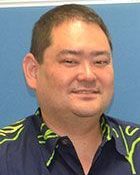
March 31, 2017 Ryukyu Shimpo
Musician Ian Shiroma, 42, an Okinawan-Hawaiian who lives in Aichi Prefecture and whose family emigrated to Hawaii four generations ago, is looking for relatives who may live in Okinawa.
His great grandfather Taru Shiroma was from Nishihara, and it seems that he emigrated to Hawaii before World War Two, but there is no further information on his family history. “I want to know my family history to tell my son,” Shiroma said.
Shiroma visited Okinawa between March 24 and 27 for his music activities and gathered information on his family history at the Okinawa Prefecture Library and other facilities.
In the Okinawa Prefectural History and the Nishihara Town History records, he found a record of a 15-year-old man named Taru, the fifth youngest son of Kama Shiroma who lived in Uchima, Nishihara. Taru emigrated to Hawaii, brought over by his father in 1917.
The man who was recorded in the two history books is likely Shiroma’s great grandfather as the birth date matches.
Shiroma could not gain any further information on the relatives of his family history because a person whose last name is not Shiroma lives at the site of the domicile of family register. Shiroma does not know if all Taru’s family members emigrated or not. Some relatives may have stayed in Okinawa.
He said, “I want to know why the first generation emigrated to Hawaii. We may not be able to find this out in the era of the fifth generation, so I have to find out now.”
Shiroma is looking for anyone who has further information on his relatives. His email address is: ishiroma@yahoo.com
(English translation by T&CT)
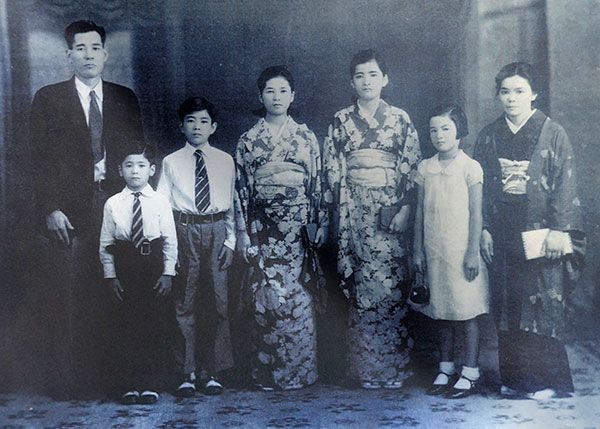
The Shiroma family’s photo, which Ian Shiroma received from a sister of the grandfather Harold. The great grandfather Taru (far left), the grandfather Harold (second from left) and the great grandmother Kanechiyo (far left).
Go to Japanese
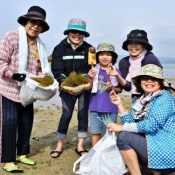
March 31, 2017 Ryukyu Shimpo
On March 30, which is March 3 in the lunar calendar, Okinawan beaches were crowded with families and people enjoying shellfish gathering. Mitsue Ishikawa, who is from Ginowan City visited the beach at Yagaji, Nago with her daughter and granddaughter, and gathered a bag full of moi seaweed in only 30 minutes. Ishikawa said, “I would like to make Moi Tofu for Shimi Festival this year. It will be delicious because it is fresh.” Her granddaughter Masayume Tanahara replied with a big smile, “I am excited. I want to eat a lot.”
Hamaui is an annual event carried out in the Amami and Okinawa regions. In Okinawa, women go to the beach with some food, and soak their hands and feet in seawater to cleanse themselves as they pray for their well-being. Recently, many people take part as they enjoy shellfish gathering.
On March 30 at Yagaji, Nago City, the family of Mitsue Ishikawa (left) enter the seawater and enjoy seaweed and shellfish gathering for Hamaui.
(English translation by T&CT and Megumi Chibana)
Go to Japanese
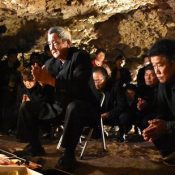
April 2, 2017 Ryukyu Shimpo
On April 1, in the dark of Chibichiri-gama cave at Hanza, Yomitan, where more than 80 villagers were driven to “mass suicide” (compulsory group suicide) on April 2, 1945, a memorial service was held by the Bereaved Family Association.
More than 30 bereaved family members and other mourners put their hands together to pray for the souls of the people who died 72 years ago in the cave. They also pledged for no more wars.
Norio Yonaha, president of the association said, “We have seen many victims already, and yet, we saw another person who was victimized. Last year, there were incidents, including the case of a civilian employee of the U.S. military who raped and murdered a young Okinawan woman. As a parent with children, I feel strong anger. The Okinawan people’s dignity and human rights have not been protected.”
“We have to fully understand the situation we are in to never repeat a tragedy like this,” he said, renewing his determination to create peace.
Tokuichi Yonaha, 74, joined his hands together and held them towards an alter while praying: “I wish for peace from Chibi chiri-gama, Yuntanza, Uchina, to the world.”
Sculptor Minoru Kinjo, 78, criticized the Japanese government’s attitude, saying, “Japan is taking the first step to war with Henoko, Takae, and Miyako Island, where the controversial issue over the deployment of the Japanese Self-Defense Force took place. We can see clearly the path from Chibichiri-gama.”
(English translation by T&CT)
Go to Japanese
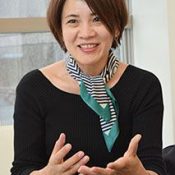
March 28, 2017 Ryukyu Shimpo
Author Minori Kitahara interviewed by Ami Chibana
The situations in which young women are likely to be pulled into the sex industry and the issue with people being forced to make an appearance in porn – what exactly is in the background of this huge industry revolving around sex and where exactly does the problem lie? We asked author Minori Kitahara, who is also interested in sexual violence that stems from the U.S. military bases.
Question: We heard you attended an Okinawan citizens meeting held last June in Naha that protested the incident of a U.S. military personnel sexually assaulting and murdering a local woman. Could you tell us more about that?
Answer: I think that people should never be allowed to talk about sexual violence committed by U.S. military personnel as if it is a “natural occurrence” that happens because the bases exist. Last year’s incident made me realize that there really is a need to come up with theories to pinpoint the assailant’s liability. If people begin to normalize that sexual violence only exists because of the armed forces or the bases, then the focus will shift from the assailant to the bases and the assailant’s liability will lessen. This is similar to the Japanese military’s comfort women issue; referring to it as a “tragedy of war” lessens Japan’s liability. Society has a weak sense of sexual violence because a culture exists where men buy women as if they have the right to do so.
Question: What do you think about the situation in which minors are being pulled into the sex industry?
Answer: I once covered a story in Tokyo regarding the JK business, or compensated dating with high school girls. A teenage girl wearing a school uniform alone will prompt the question, “How much?” from older men. If you look up “high paying part-time jobs” online, with just one click, you can step into the sex industry. At what point does personal responsibility turn into social responsibility? Shouldn’t society take responsibility too? The big issue is that the environment is so well-established that it makes it easy for women to get pulled into prostitution.
We need to also look at laws, awareness, history, and culture that promote prostitution. If you ask older men why they partake in prostitution, they simply answer, “It’s the world’s oldest job.” Why does prostitution keep on developing? How do the anti-prostitution laws, with all of their loopholes, compare to the rest of the world?
Question: The government works to eliminate child poverty. However, young people who work in the sex industry while also raising children find it hard to qualify for this type of aid. There seems to be a misunderstanding that the prostitutes put themselves in this situation. What are your thoughts on this?
Answer: I’m sure some men feel that paying money for a prostitute’s services supports the prostitute. But some could also look at it as “I have to pay that much?” or “Maybe I can pay afterwards?” Former diplomat Masaru Sato, who I wrote about in my book, “Sex and Country,” clearly stated that he hated it, but some men like that do exist. I wish men would tell other men, “Hey, let’s stop partaking in prostitution.”
Some men’s understanding that women sell themselves because they want money to party is only there to make the men, who want to buy, feel better about it. Men are the ones that put a price tag on the service, and it is also men that want to buy that service. Meanwhile, I think that men’s sexuality is also being exploited as well. In a society where so many porno magazines are on display at convenience stores, I’m sure men also feel a strong sense of pressure to conform. I presume that some men don’t like it, but must tag along to hostess bars because certain business relationships and/or cultural norms exist.
Question: Recently, issues regarding people being forced to appear in porn has come to the surface more and more. What are your thoughts on this?
Answer: This situation where the porn and prostitution industries are becoming so big and normal, really isn’t seen in any other country. In the end, whether it’s porn or prostitution, it’s not a sexual labor or sexual expression problem, but a “sexual exploitation problem.” If we are able to recognize it as sexual exploitation, then we can shed light on the issues we see in society. It would also allow us to say that society, which is demanding such things, is messed up. There are a couple reasons why people don’t ask for help after being forced to appear in porn. One reason is that there is a performance fee. Another is that, people fear that if they raise their voice while the video circulates, it will only make it worse. Using freedom of expression as their shield, people portray it as if the director(s) and the actors and/or actresses are a part of an artistic performance. This only creates more violence and it silences the victims. First, we need to show just how many victims there are out there. We must also make it clear how much damage was caused and to stop men from demanding it.
◇ ◇
Minori Kitahara. Born 1970 in Kanagawa Prefecture. Author. Established “Love Peace Club,” a sex toy shop for women from a feministic viewpoint in 1996. Publications include: “Poisonous Woman,” “Patriotic Wives (coauthor),” and “Sex and Country (coauthor).”
(English translation by T&CT and Chelsea Ashimine)
Go to Japanese
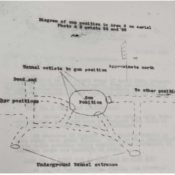
March 31, 2016 Ryukyu Shimpo
On March 31, the Okinawa Prefectural Archives will release to the general public roughly 584,000 pages of strategy report documents created by U.S. army and marine troops during the Battle of Okinawa. The documents were gathered from among documents held at the U.S. National Archives and collected by Japan’s National Diet Library. This is the largest batch of Battle of Okinawa-related documents ever released at once by the Prefectural Archives. It is expected that Okinawa releasing as a collection these important documents gathered individually by researchers in the United States, Tokyo and elsewhere will lead to advancements in Battle of Okinawa studies.
The released documents contain, among other things, Japanese military documents seized by the U.S. military during the war and records of interrogations of Japanese soldiers taken prisoner by the U.S. military. The majority of Japanese military-related documents were burned after the war, leaving many unanswered questions about the Battle of Okinawa, but these records may play an important role in filling in those gaps.
The documents to be released include Battle of Okinawa-related documents from U.S. Army World War II strategy reports and U.S. Marine geographical files. The U.S. Army reports include strategy plans, strategy commands, battle reports, occupation activity reports, enemy status reports, intelligence reports and the like prepared by the army’s regional armies, armies, army corps, divisions and the like from the time of the Pacific War until around 1947. They will be released in series of the Pacific War region, 10th Army, 24th Army Corps, 7th Infantry Division, 27th Infantry Division, 77th Infantry Division, 96th Infantry Division, and 441th Counterintelligence Corps Detachment. The U.S. Marines geographical files include strategy plans, strategy commands, battle reports, intelligence reports, records of prisoner interrogations and the like. They will be released by division, including task force, 3rd Amphibious Corps, 1st Marine Division, 2nd Marine Division, and 6th Marine Division.
Documents created by the U.S. military in the Pacific, including these, were released by the U.S. National Archives in the 1970s, and were collected by Japan’s National Diet Library. Since November of last year, the Okinawa Prefectural Culture Promotion Association gathered documents from the National Diet Library using keywords, dates, and military units relating to the Battle of Okinawa to find relevant documents, and donated the documents to the Okinawa prefectural government.
The documents are all in the original English except for titles translated into Japanese, and are recorded on microfilm. They can be read in the archive building using a microfilm reader.
An archivist from the Prefectural Culture Promotion Association said, “These documents will allow us to verify and supplement testimony from the Battle of Okinawa, bringing us closer to the truth. I hope many people view these records and uncover the full history of the Battle of Okinawa.”
(English translation by T&CT and Sandi Aritza)
Go to Japanese
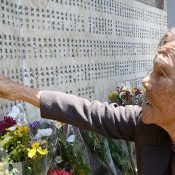
March 29, 2017 Ryukyu Shimpo
On March 28 at Shiratama no To, Tokashiki Village hosted a memorial service for those who died in the “group self-determination” (compulsory mass suicide) 72 years prior on March 28, 1945 during the Battle of Okinawa. Bereaved family members and concerned persons numbering about 60 attended. Showing a grave countenance, the attendees joined hands in prayer.
Tokashiki Village’s mayor Yoshikatsu Matsumoto gave an address, saying, “There is nothing more sorrowful than this tragic way in which many precious lives were lost.” He reminded the village people to tell their descendants of history, so it will live on in memory.
Pupils of Tokashiki Elementary and Junior High Schools dedicated an art piece of folded paper cranes forming the character for heart (kokoro) for the service. The pupils said they created the piece with an intention of bringing people around the world a sense of gentle serenity.
Chairman of the Tokashiki Village Assembly Yasuhiro Tamaki told those in attendance to never forget that the peace and prosperity enjoyed today has been built atop the honored sacrifices of those who came before. He instructed, “Hand [this history] down into the future, so the truth of the preciousness of [the victims’] lives never fades.”
One man in his 80s tearfully said that he lost his father and three brothers in the mass suicide, and that his heart aches to this day.
(English translation by T&CT and Erin Jones)
Go to Japanese
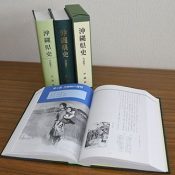
March 30, 2017 Ryukyu Shimpo
The Okinawa Board of Education held a press conference at their offices on March 29, regarding the March 10 release of Okinawan History Compilation 6; The Battle of Okinawa, as part of their modern history collection. The volume is a collection that includes background information leading up to the battle, the events of the battle in various places, testimonials from Okinawans who lived through the fighting, aspects of the battle such as group suicide, as well as post-war cleanup and peace education. The book also shines light on disabilities, post-traumatic stress disorder (PTSD), and leprosy. At the press conference, Okinawa International University Professor Shinobu Yoshihama, chair of the Special Committee on Modern Okinawan History (the Battle of Okinawa) commented, “[The book], is a culmination of all the research on the Battle of Okinawa to this point.”
The last Okinawan History book that dealt with the Battle of Okinawa was Okinawa History Vol. 8; Overview of the Battle of Okinawa, published from 1971-1974, 43 years ago. The current volume is printed on B5 paper, and is 824 full-color pages. The five-part book comprises 72 essays from 37 researchers.
The collection is written with an eye towards essays that are: 1. based on the results of the most recent research on the Battle of Okinawa; 2. based on the accumulated experiences and accomplishments of the people of Okinawa and its communities; and 3. give importance to the perspective and testimony of the people who lived through the battle. The collection also solicited the works of younger researchers, and aims to link research about the battle to later generations.
Yoshihama also noted, “The book 40 years prior was centered on people’s testimonials, but by comparing data from both the Japanese and U.S. militaries we were able to establish historical facts.” 1,500 copies of the book will be distributed to public libraries and schools throughout Okinawa, and another 300 copies will be on sale starting April 1 for 5,000 yen each. Books can be reserved starting March 29 from the Okinawa BoE website. For more information, contact the historiography team in the Cultural Properties Division at the Okinawa Bureau of Education (Tel.) 098 (888) 3939.
(English translated by T&CT and Sam Grieb)
Go to Japanese









 Webcam(Kokusai Street)
Webcam(Kokusai Street)


